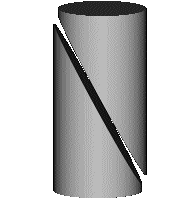Fine-grained soil is tested in compression. Undisturbed
specimens cut from tube samples and disturbed specimens are
loaded in compression, recording load and deflection measurements.
Laboratory strength tests of soil are similar to testing concrete
cylinders, but can be performed with or without lateral confining
pressures. The unconfined test uses axial loading without lateral
confining pressures, making it the simplest and easiest laboratory
method of estimating strength.
To more accurately simulate actual loading conditions in the field,
lateral confining pressures can be applied using a triaxial test,
which is a completely different apparatus.
Research has shown that the strength of a soil determined by
compression testing varies with extremes of the length to diameter
ratio and the rate of strain. It is generally accepted that ratios of
length to diameter of 1.5 to 3.0 are satisfactory. Ratios of 2.0 and
2.5 are commonly employed. Similarly, satisfactory rates of strain are
0.5 to 2.0% per minute. For most samples 0.5 to 1.0% per minute is
used most frequently.
Unconfined compressive strength is calculated the same as for any
material, with an additional calculation of the area change from
bulging. The shear strength is defined as half the compressive
strength.
Equation Set 1.1: Unconfined strength

Since soils tend to deform much more than concrete, the area of
the specimen changes to maintain constant volume through the test
(bulging). Thus, the average cross sectional area at a
particular deformation during the test is calculated using:









